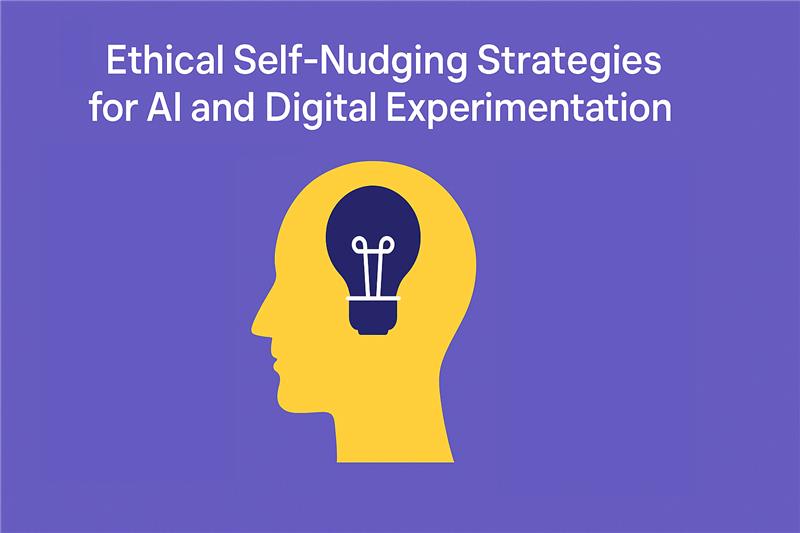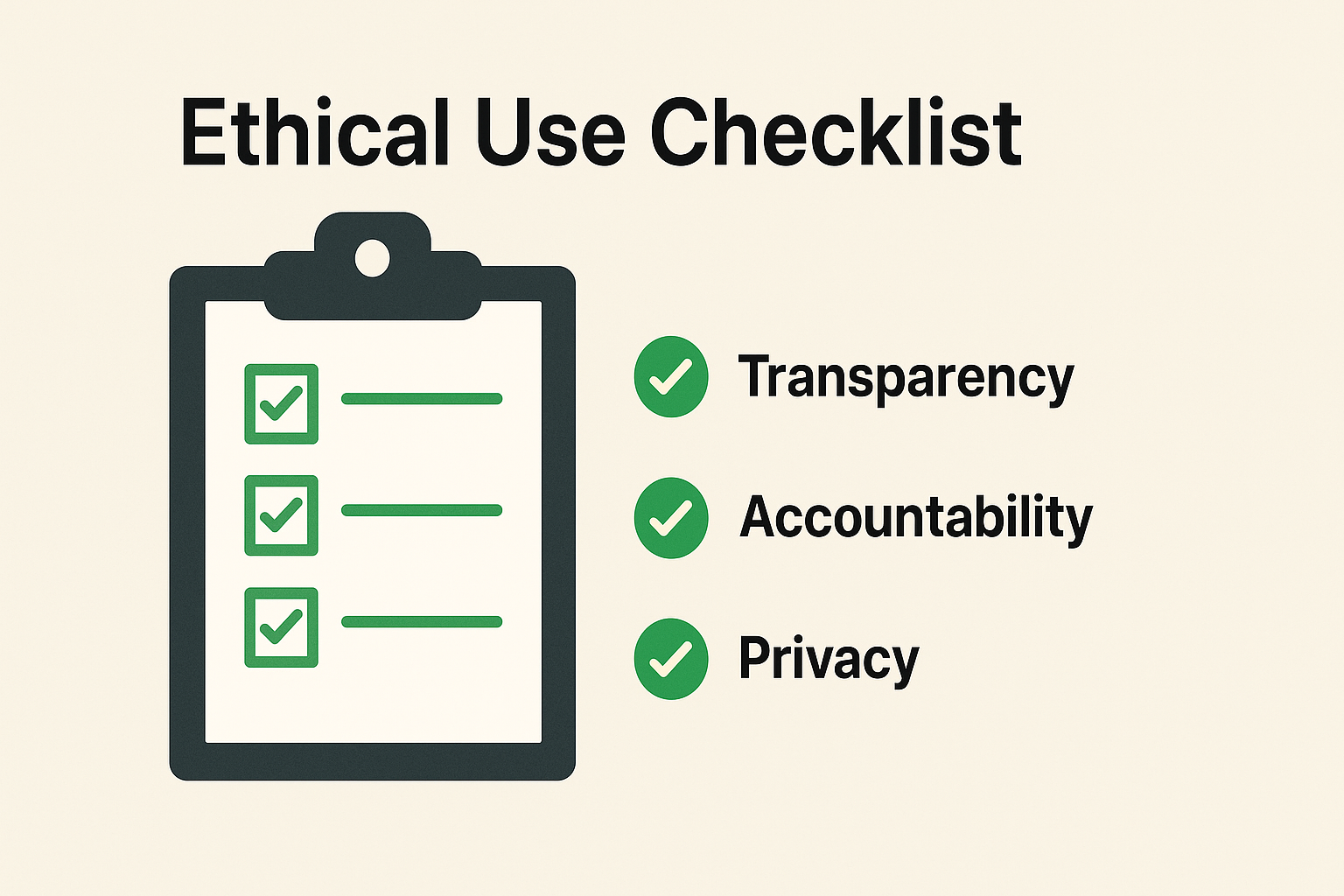
This unit examines effective techniques for integrating ethics into AI-driven educational innovation. On the one hand, it presents self-nudging strategies as instruments that should be used taking into account ethical awareness, on the other it looks at self-nudging as techniques that can encourage the ethical application of AI technologies in different areas of education. These strategies are intended to be simple, adaptable, and easy to integrate into existing routines. Learners are encouraged to try the strategy that inspires them the most, observe the result, and adjust or build on it as needed.
The first practical strategy focuses on developing and maintaining an AI Experimentation Journal as a structured reflective tool to document and critically evaluate their engagement with AI technologies in their daily work. Each journal item functions as an introspective narrative, capturing both the procedural and ethical dimensions of AI integration in their work. Built on the concept of self-nudging, the journal supports intentional reflection and ethical awareness through regular, scaffolded documentation.
Purpose of the Journal
The journal serves as a formative mechanism for ethical self-regulation, enabling educators to plan their activities and use of digital tools, assess activities outcomes, and interrogate the implications of AI use in teaching and learning. By systematically recording experiences, educators cultivate a habit of ethical digital tools application in alignment with principles such as fairness, transparency, and inclusivity. Each journal entry can include:
The second proposed strategy focuses on implementing a weekly prompting routine designed to inspire sustained ethical reflection in their use of AI technologies. Drawing on the instructional function of prompting as a form of linguistic scaffolding, this strategy encourages deliberate engagement with the ethical dimensions of instructional innovation. Prompts serve as cognitive cues aligned with the principles of self-nudging, that guide educators in interrogating their practices, surfacing unintended consequences, and refining their approach to AI integration.
Purpose of the Weekly AI Prompts
These prompts function as structured reflective instruments, enabling educators to critically assess the role of AI in their teaching, identify ethical tensions, and document their evolving understanding of responsible technology use. By embedding this practice into a weekly cadence, educators cultivate a habit of ethical inquiry and contribute to a culture of continuous improvement. Below are collected some examples of weekly prompt that learners can use:
a) What did AI help with this week?
Identify specific tasks or instructional goals supported by AI tools.
b) Were there any unintended consequences?
Reflect on outcomes that diverged from expectations, including ethical concerns.
c) How did I ensure fairness, privacy, and transparency?
Articulate the safeguards or design choices that upheld ethical principles.
d) What limitations did I encounter?
Consider technical, pedagogical, or ethical constraints that emerged.

Before engaging with any AI tool in instructional settings, educators can also apply a structured ethics checklist designed to guide responsible decision-making. Rooted in the concept of externalized support, checklists function as practical tools for reducing mental load, ensuring ethical consistency, and promoting intentionality in complex or high-stakes environments. In the context of AI-enhanced education, this checklist serves as a self-nudging mechanism, prompting educators to pause, reflect, and verify alignment with core ethical principles prior to implementation.
Purpose of Checklist
The checklist enables educators to systematically assess the ethical implications of AI use. By embedding an ethical checklist into lesson planning or digital forms, educators can ensure that each instructional decision involving AI is transparent, equitable, and accountable. This practice reinforces systemic professional responsibility in technology-mediated learning environments.
The check list can include elements such as: data protection, accessibility & inclusion, transparency. Following are some examples of questions and items educators can integrate in their own checklists:
After exploring how self-nudging strategies can guide ethical AI experimentation in educators’ daily work, unit 3 will focus on showcasing practical use cases of AI and digital tools application fostered by self-nudge techniques adoption in educational settings.
Objective:
To apply ethical self-nudging technique in educators daily work to foster building new habits, supporting critical reflection, and learning on the use and effectiveness of AI and digital tools in educational contexts.
Instructions: